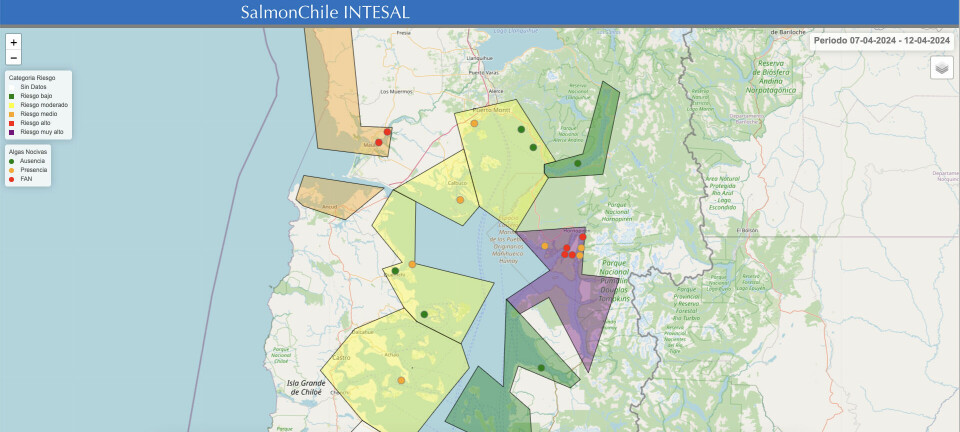
Monitoring algal bloom with an eye in the sky
In Chile, satellite imagery and machine learning are being used to track danger
A company that leverages exponential advances in the satellite industry and application of machine learning models for the early detection and tracking of harmful algal blooms (HABs) is engaged in monitoring a potentially damaging situation in Chile.
Watermind was founded last year by brothers Fernando and Raimundo Manterola and processes high-resolution, multispectral satellite data produced daily.
Currently, the brothers are working with two salmon farming companies, monitoring three neighbourhoods daily during the 2024 HAB risk season.
Raimundo Manterola, the company’s technology director, told Fish Farming Expert’s Chilean sister site, Salmonexpert.cl, that according to historical data from the industry where HAB mortalities have occurred in Chile, the months of greatest risk are between October and May, especially March and April.
Bloom is spreading
Asked about a current bloom recorded in neighbourhood 17B in Los Lagos region, Manterola reported that of the areas they are currently monitoring, they have observed greater activity at the end of December and during January, and less activity during February and March. However, since the beginning of April, greater activity has been identified in the areas of 17B.
“Two weeks ago, Plancton Andino contacted us to inform us
that they were detecting the presence of Heterosigma Akashiwo in some farms, so
that we could support this contingency with our data,” said Manterola.
“This allowed us to identify that the bloom was distributed not only in the Cholgo and Hornopirén channel, but that it was also developing in the western area of Pelada Island, following the mouth of the Río Negro. In this area there are practically no active farms, so our information has been essential to understand the distribution of this event and the risk areas.”
Similarities to 2021
According to the company’s technology, alterations are currently observed in several sectors, including both channels of Pelada Island and to the north and west of Llancahué Island. “In addition, we see that blooming is still high in the Hornopirén area at the mouth of both rivers,” said Manterola.
Asked if there are similar characteristics to the 2021 bloom of the same microalgae that killed more 2,000 tonnes of farmed salmon, he added: “There are certainly similarities due to the species, date of the year, nearby sector of occurrence and presence of several sunny days in a row. From the point of view of what we observe with our satellite data, in both cases clear alterations are identified following the mouths of rivers (Vodudahue 2021 and Rios Blanco y Negro 2024) towards the outside of the fjords, in some cases passing through fish farms.”
The company has an alliance with Planet Labs PBC, a satellite technology company, and is also part of state innovation agency Corfo’s Startup Chile program and Google’s Startups For Sustainable Development.
























































